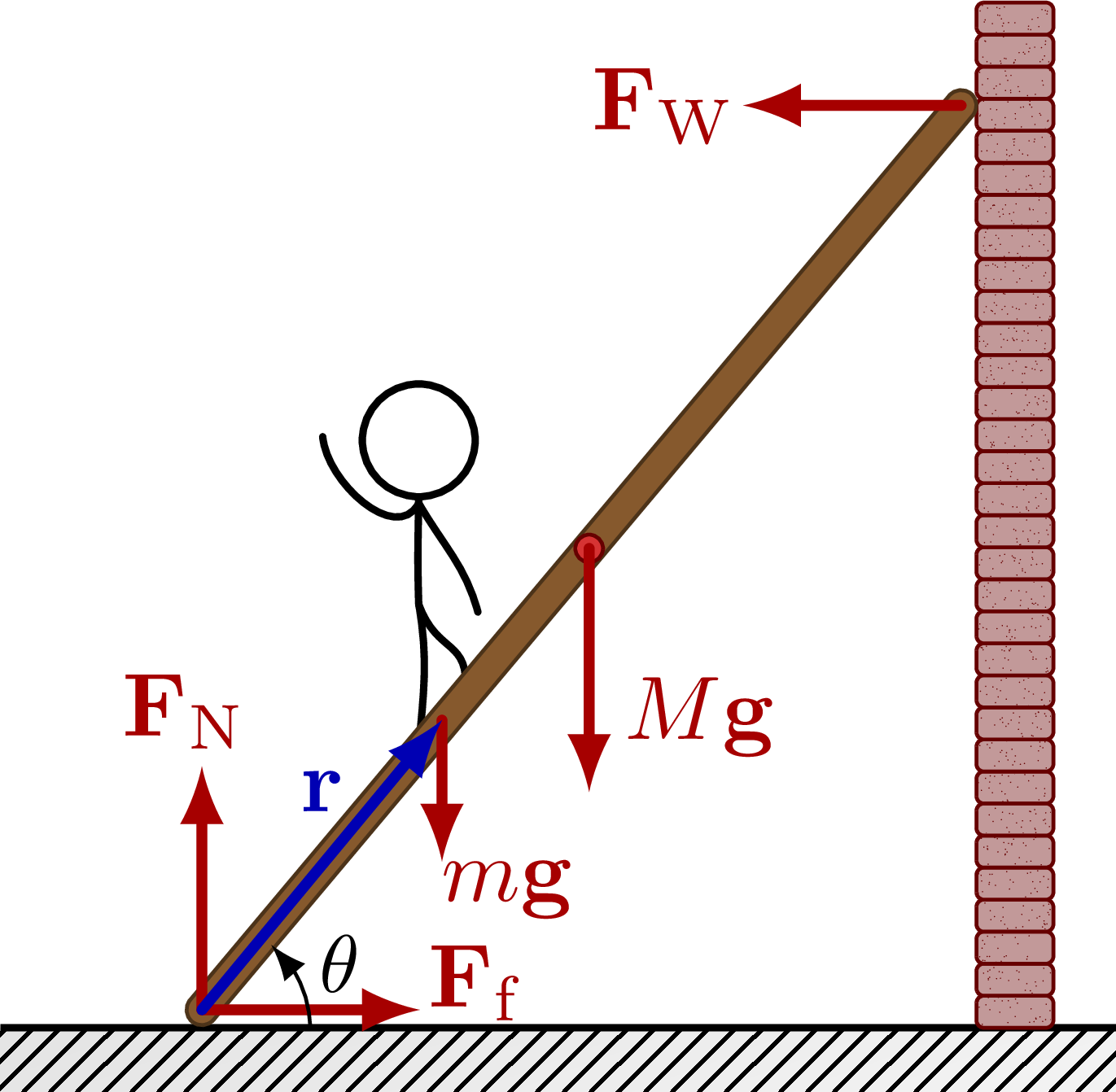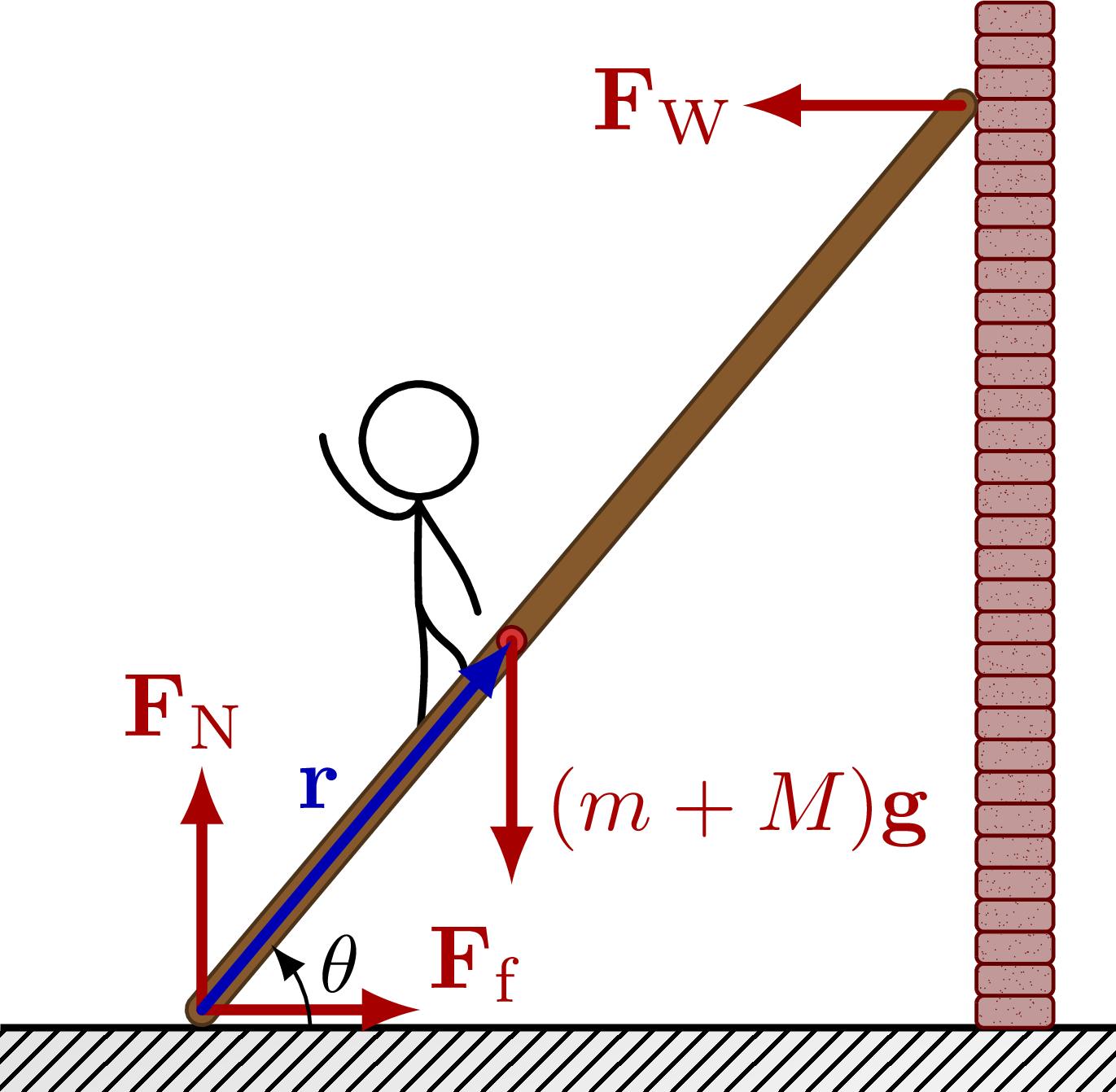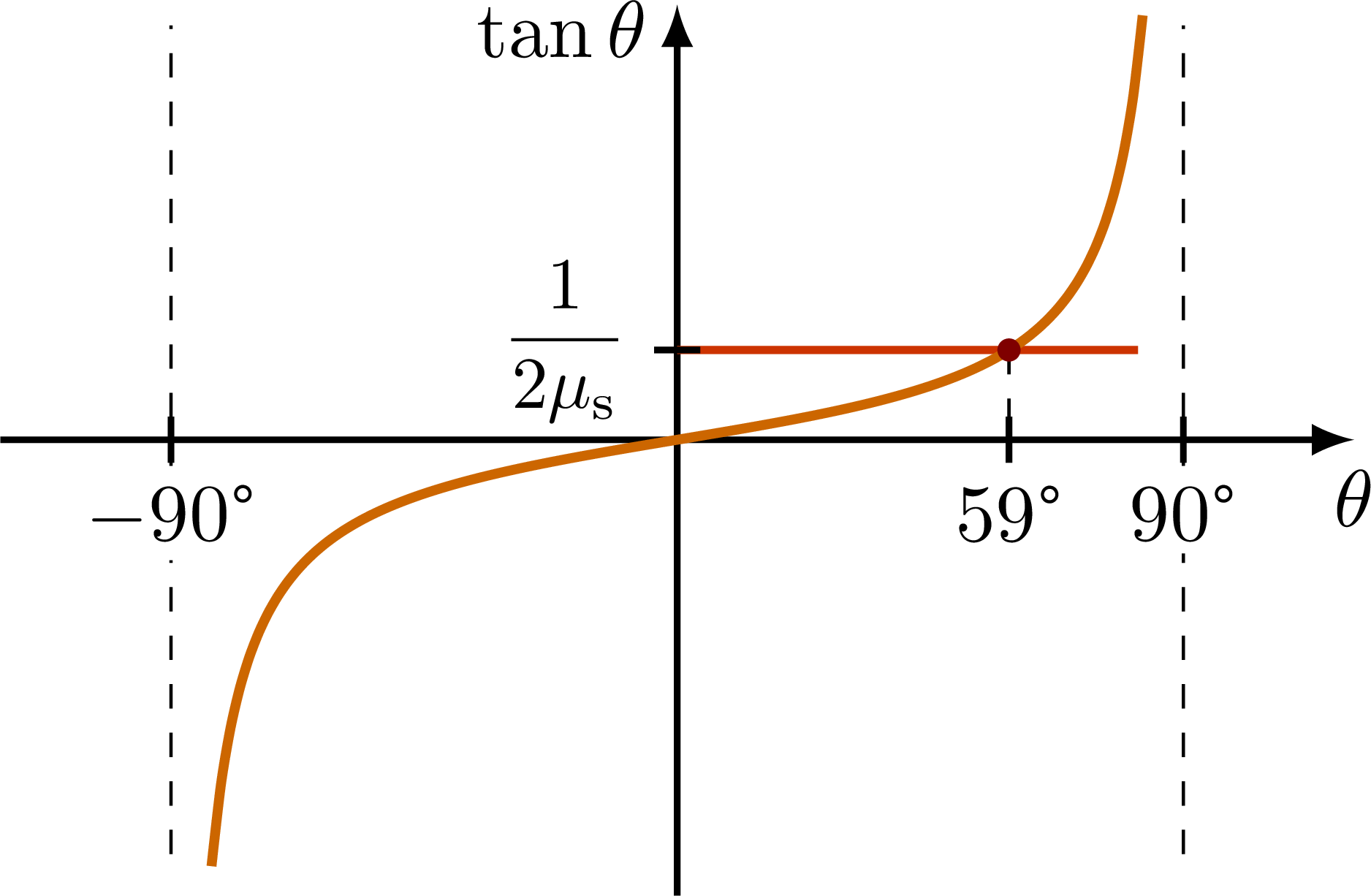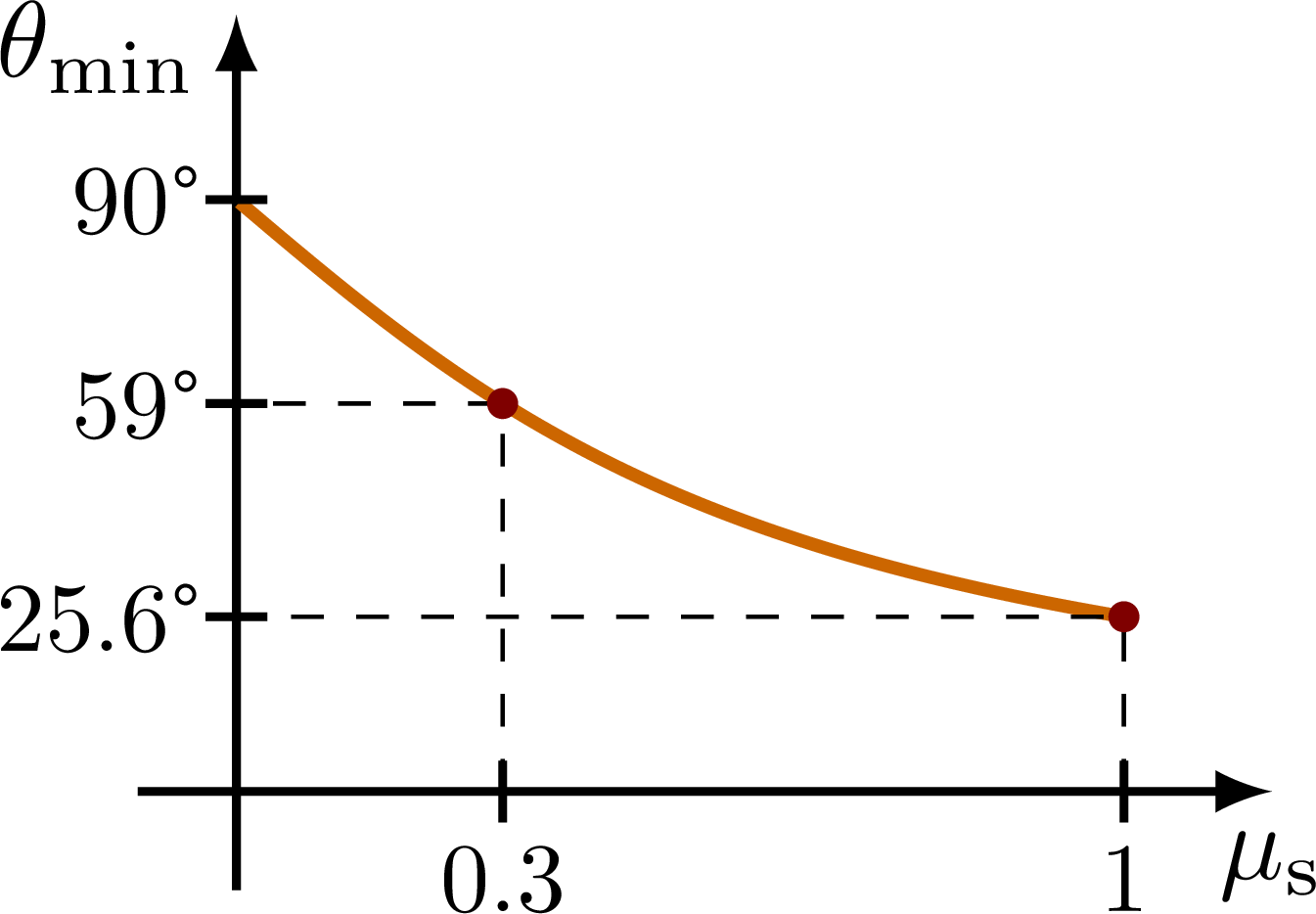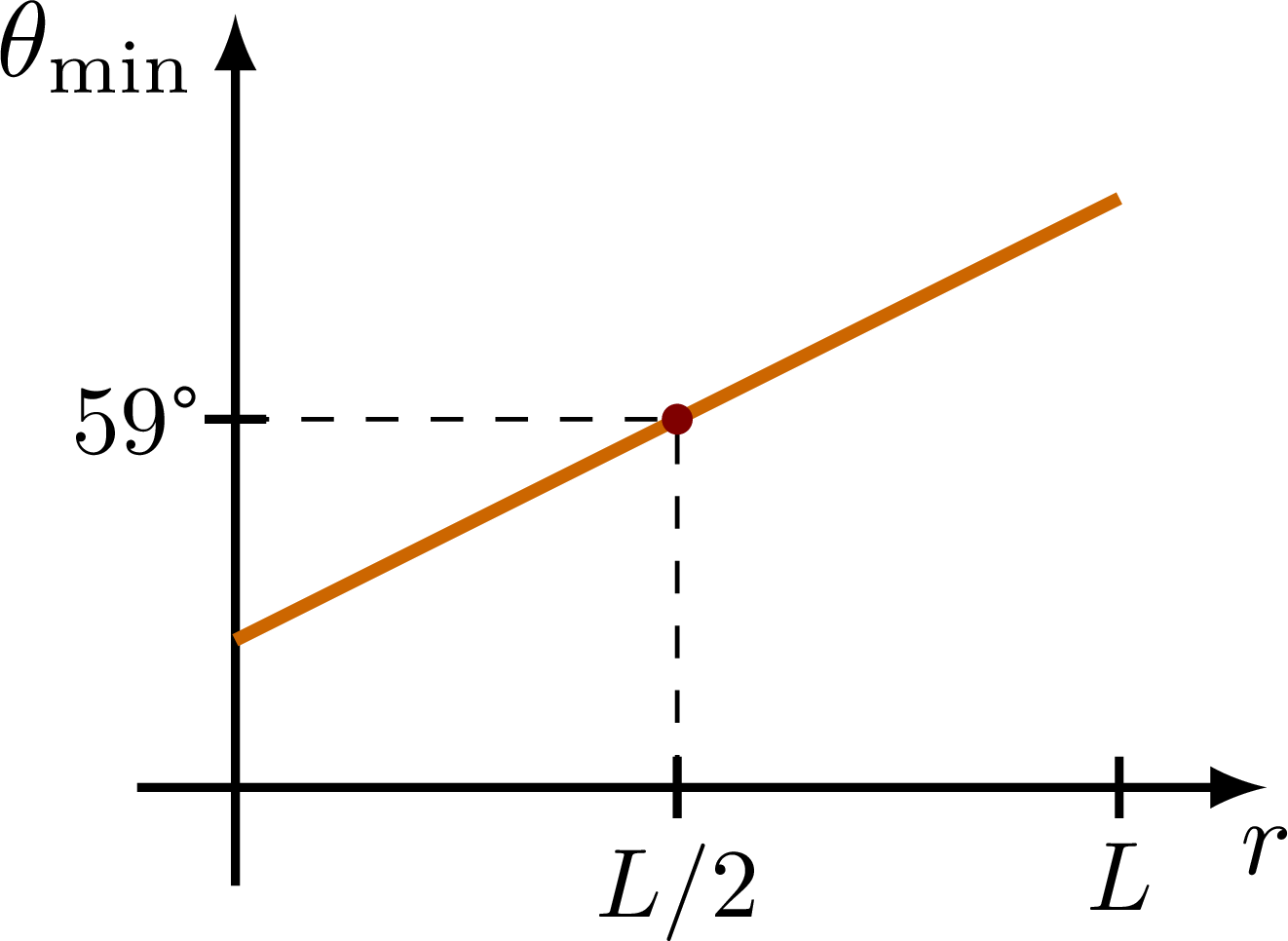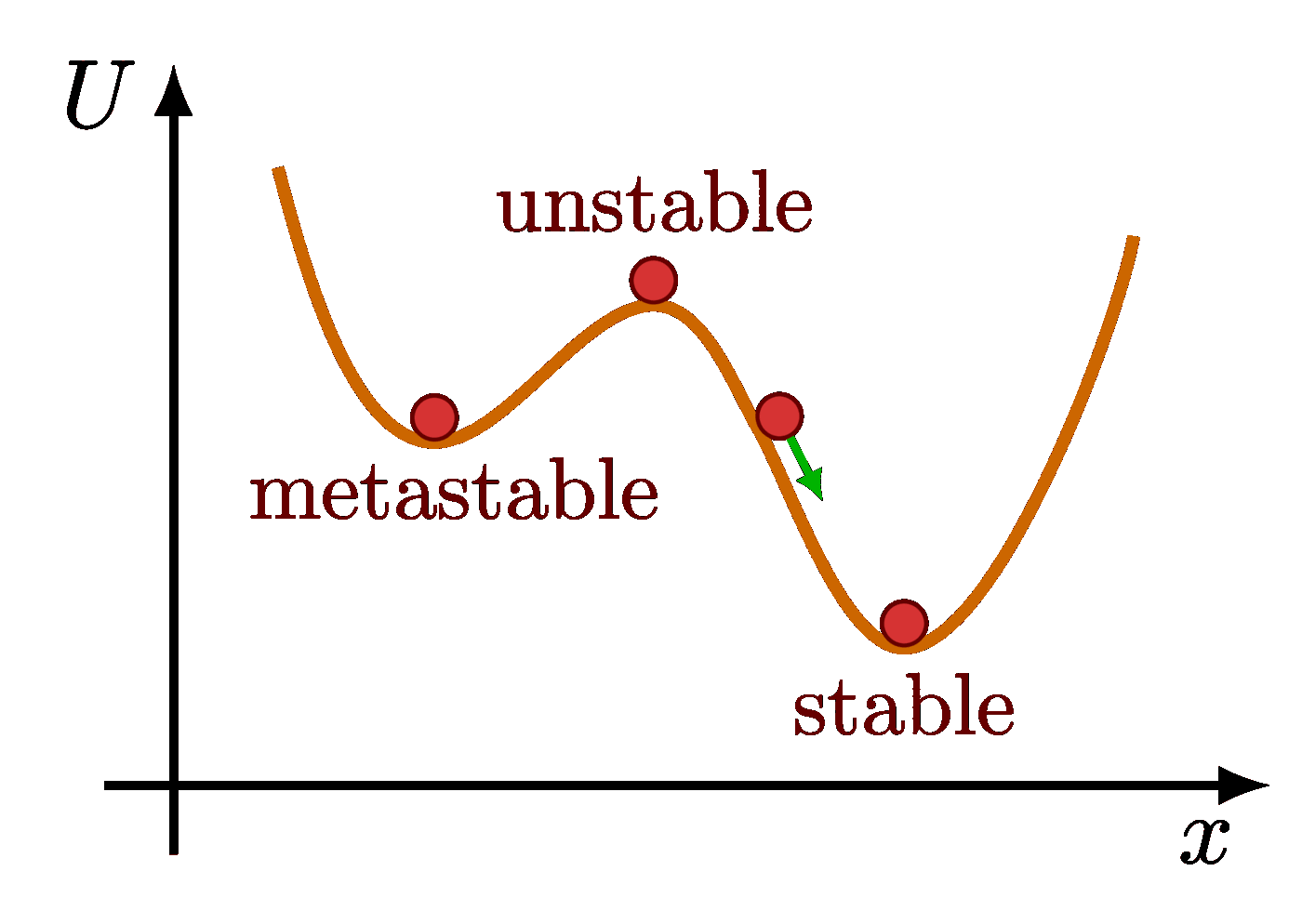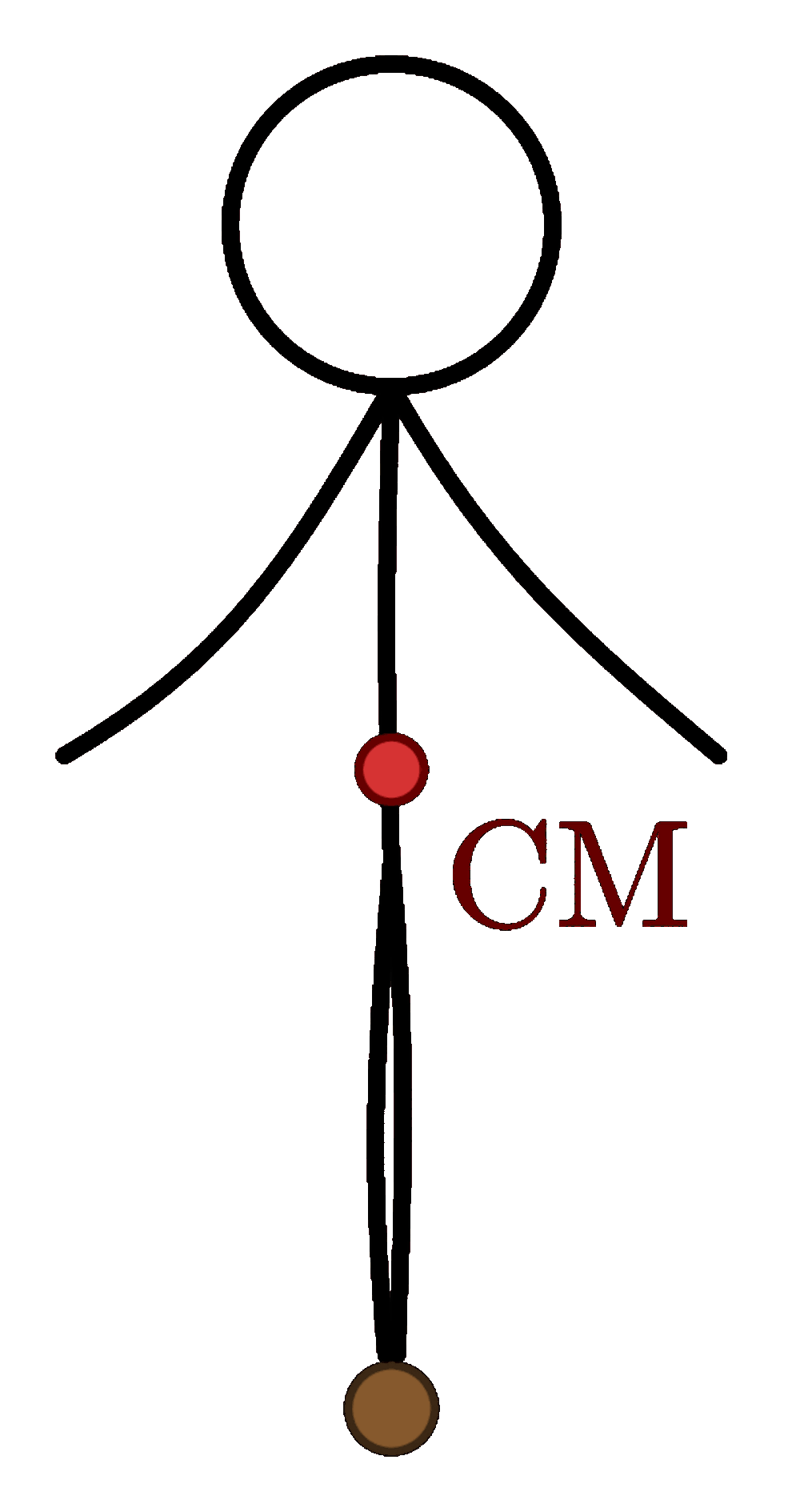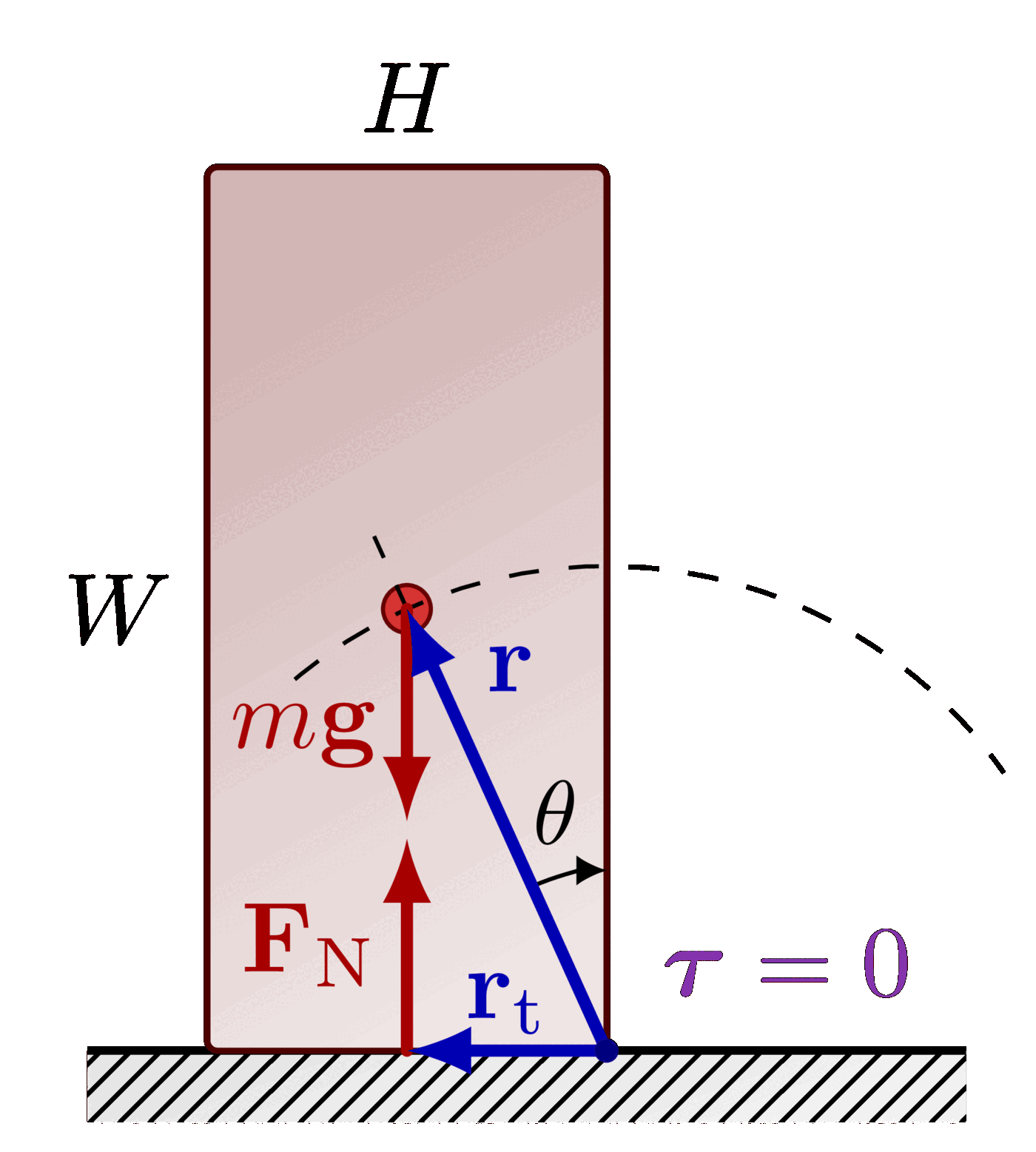Study of the stability of a ladder leaning against a brick fall.
For more on stability, see the “stability” tag. These figures are used in Ben Kilminster’s lecture notes for PHY111.
Edit and compile if you like:
% Author: Izaak Neutelings (October 2020)\documentclass[border=3pt,tikz]{standalone}\usepackage{physics}\usepackage{siunitx}\usepackage{tikz}\usetikzlibrary{calc}\usetikzlibrary{angles,quotes} % for pic\usetikzlibrary{arrows.meta}\usetikzlibrary{bending} % for arrow head angle\tikzset{>=latex} % for LaTeX arrow head\usetikzlibrary{patterns}\colorlet{xcol}{blue!70!black}\colorlet{vcol}{green!60!black}\colorlet{myred}{red!65!black}\colorlet{mypurple}{blue!60!red!80}\colorlet{acol}{red!50!blue!80!black!80}\tikzstyle{rvec}=[->,xcol,very thick,line cap=round]\tikzstyle{vvec}=[->,vcol,very thick,line cap=round]\tikzstyle{myarr}=[{Latex[length=3,width=3]}-,xcol]\tikzstyle{myarr2}=[{Latex[length=2,width=3]}-{Latex[length=2,width=3]}]\tikzstyle{force}=[->,myred,very thick,line cap=round]\tikzstyle{Fproj}=[force,myred!40]\tikzstyle{myarr}=[-{Latex[length=4,width=3]}]\tikzstyle{myarr2}=[{Latex[length=4,width=3]}-{Latex[length=3,width=3]}]\tikzstyle{CM}=[red!40!black,fill=red!80!black!80]\tikzstyle{mass}=[line width=0.6,draw=red!30!black, %rounded corners=1,top color=red!40!black!30,bottom color=red!40!black!10,shading angle=30]\tikzstyle{ground}=[preaction={fill,top color=black!10,bottom color=black!5,shading angle=20},fill,pattern=north east lines,draw=none,minimum width=0.3,minimum height=0.6]\tikzstyle{metal}=[fill,top color=black!40,bottom color=black!20,shading angle=10]\def\tick#1#2{\draw[thick] (#1) ++ (#2:0.1) --++ (#2-180:0.2)}\tikzstyle{ladder}=[brown!40!black,fill=brown!70!black,thin,line cap=round]\tikzstyle{limb}=[thick,line cap=round]\def\LL{4.7} % ladder length\def\LR{0.06} % ladder radius\def\r{0.04} % pulley small radius\tikzset{pics/Tin/.style={
Click to download: dynamics_stability_ladder.tex • dynamics_stability_ladder.pdf
Open in Overleaf: dynamics_stability_ladder.tex



